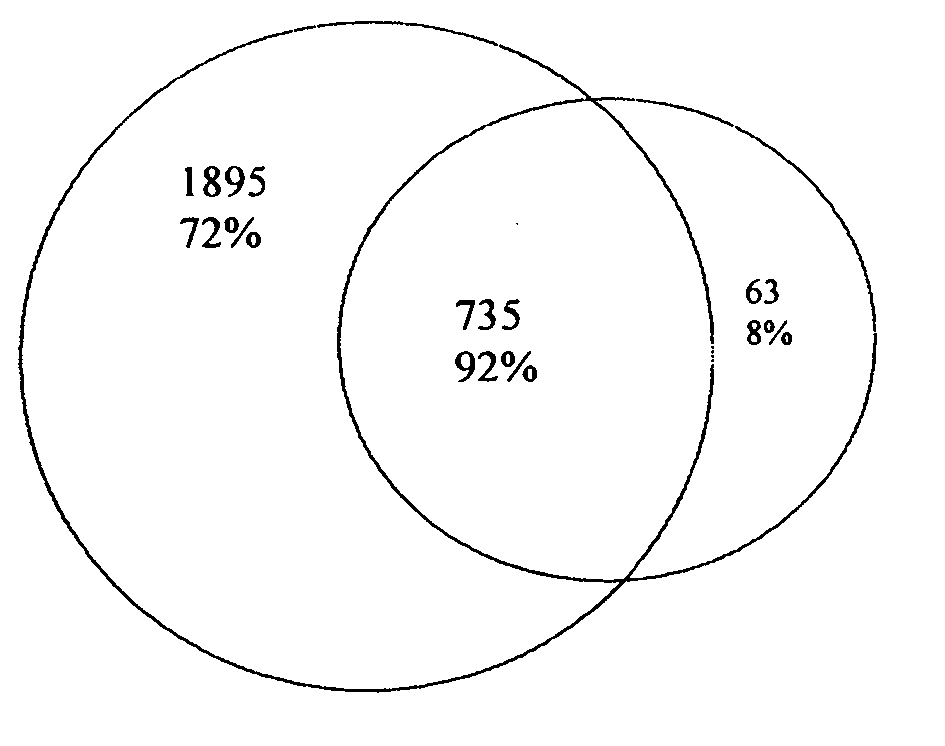Diagnostic markers for neuropsychiatric disease
a neuropsychiatric disease and diagnostic marker technology, applied in the field of biologic markers, can solve the problems of nerve damage difficult diagnosis of multiple sclerosis, etc., and achieve the effect of strengthening the confidence level of diagnostic prediction
- Summary
- Abstract
- Description
- Claims
- Application Information
AI Technical Summary
Benefits of technology
Problems solved by technology
Method used
Image
Examples
example i
Materials and Methods
[0074]Cerebrospinal Fluid (CSF) Specimens.
[0075]All specimens had normal clinical laboratory values with respect to microbiology, chemistry (including protein levels), and cell counts (red blood cell were 0-10 / mm3 and white blood cells were 0-5 / mm3). Four sets of different types of normal CSF samples were analyzed. The first set, designated as true (healthy) normals was comprised of pooled CSF from 11 healthy normal individual volunteers from the United States (8 women and 3 men; aged 24 to 55 years with a median age of 28 years) was used for the comprehensive analysis using immunoaffinity depletion and 2D-LC-MS / MS. A second set, also true normals included pairs of serial CSF aliquots taken at least 4 weeks apart from 10 healthy volunteers from the United States (age 37-44 years; 5 males and 5 females). A third set, designated as non-neurologic surrogate-normals, was a pool of 200 subjects from Sweden (all without a neurologic or psychiatric disease, most who un...
example ii
[0098]In the experimental analysis of data on documented first attack Multiple Sclerosis subjects, long lists of proteins found in these subjects (data not shown) and small subset lists as well as a list of those proteins that appear to be absent (below the level of detection) have been found.
Specifically:
[0099]1) Table 1m shows Cerebrospinal Fluid (CSF) Proteins present only in Multiple Sclerosis patients compared to Surrogate Non-Neurologic Normals and to Surrogate Neurologic Normals
(Headaches). This is a Qualitative List of CSF Proteins Present in the Pooled First Attack Multiple Sclerosis Patients compared to the combined lists of Proteins Found in a Similarly Analyzed Group of Non-neurologic Surrogate Normal Subjects and Proteins Found in Neurologic Surrogate-Normals (Headache subjects with normal CSF clinical laboratory values).
[0100]2) Table 2m shows a Qualitative List of CSF Proteins Absent only in the Pooled First Attack Multiple Sclerosis Patients compare...
example iii
Chronic Fatigue Syndrome
[0103]In the experimental analysis of data on Chronic Fatigue Syndrome subjects, long lists of proteins were found in these subjects and smaller subset lists as well as a list of those proteins that appear to be absent (below the level of detection). Immunoaffinity depletion of abundant proteins was applied in the analyses. In addition, semi-quantitative, or relative protein abundance comparisons were made to proteins found in a disease that has common features with Lyme disease-Chronic Fatigue Syndrome. Also found were proteins associated with this group that are considered hypothetical or uncharacterized proteins.
Specifically:
[0104]1) Table 4H-c shows the list by IPI number of those hypothetical or uncharacterized proteins that were found in Chronic Fatigue Syndrome.
[0105]2) Table 5c shows the CSF Proteins Present in Chronic Fatigue and not in Normals or Neurologic Lyme subjects. All had immunoaffinity depletion. They are listed by IPI identification number...
PUM
 Login to View More
Login to View More Abstract
Description
Claims
Application Information
 Login to View More
Login to View More - R&D
- Intellectual Property
- Life Sciences
- Materials
- Tech Scout
- Unparalleled Data Quality
- Higher Quality Content
- 60% Fewer Hallucinations
Browse by: Latest US Patents, China's latest patents, Technical Efficacy Thesaurus, Application Domain, Technology Topic, Popular Technical Reports.
© 2025 PatSnap. All rights reserved.Legal|Privacy policy|Modern Slavery Act Transparency Statement|Sitemap|About US| Contact US: help@patsnap.com



